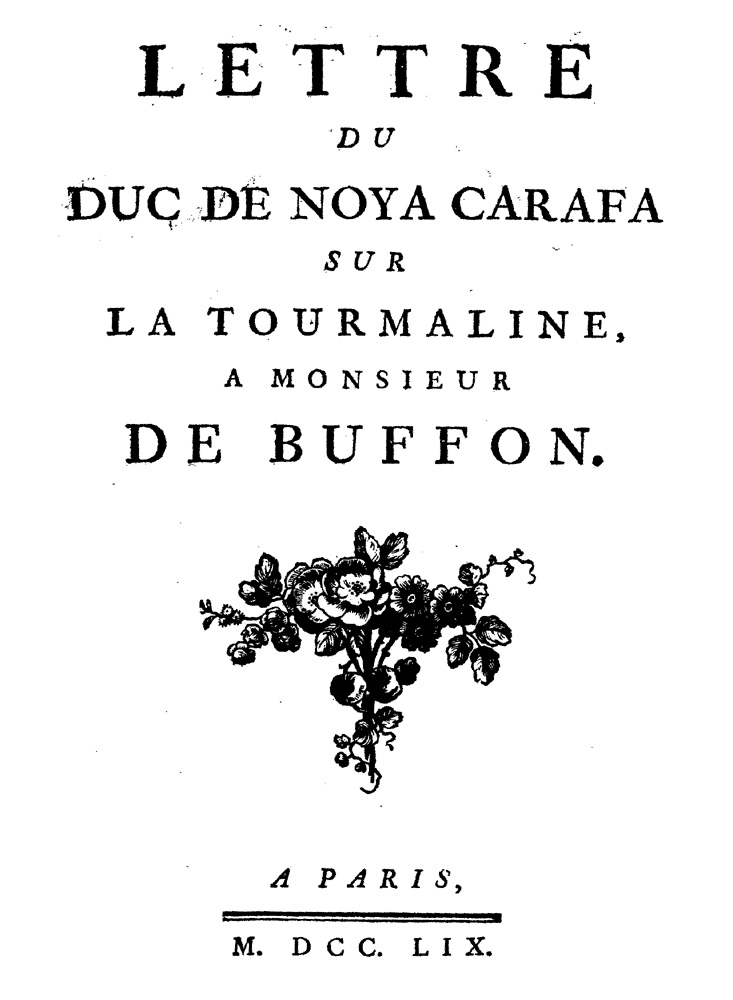CARAFA, Giovanni.
(1715 – 1768)
In his youth, Carafa studied grammar and literature, learning how to write elegant Italian. His interests turned to scientific matters, especially mathematics. Through the use of private tutors, he advanced to the University level. In 1738, he was named a reader in optics and mathematics at the University of Naples. While there, he became interested in the natural sciences especially mineralogy, geology and botany. He began collecting in these area, creating an extraordinary garden at his Naples estate. In 1743, Carafa entered the military, and was rewarded for his valor by royal appointments to civil service positions. From 1750 to 1760, he made extensive trips throughout Europe and Russia, meeting many of the great scientists of the day.
Biographical references: ABI: II 111, 421. • Dizionario Biografico Italiani: 19, 561-2. • WBI.

1. French, 1759.
Lettre | Du | Duc De Noya Carafa | Sur | La Tourmaline, | A Monsieur | De Buffon. | [ornament] | A Paris, | [double rule] | M. DCC. LIX.
4°: [1]-35, [1] p., one folding plate. Ornamental head- and tail-pieces. Page size: 240 x 190 mm.
Contents: [1-2], Title page, verso blank.; [3]-35, Text.; [1 pg], Blank.
Very rare. In this letter to Count Buffon, Carafa provides his observations on the tourmaline, including one of the earliest written descriptions of the pyroelectricity property of the mineral. During a trip to Paris in 1759, Carafa witnessed experiments on electricity using a variety of substances including tourmaline. By heating the mineral a weak electrical field is generated. This field manifests itself in the heated stone by attracting small bits of paper and ash to it like a magnet. On his return to Italy in September, 1759 Carafa repeated the experiments he had witnessed at the Società Colombaria in Florence, and this short monograph records the results of that demonstration in the form of a letter to Count Buffon. Aepinus thought the work of enough merit that he reprints it with commentary in his Recueil des Differents Memoires sur la Tourmaline (St. Petersburg, 1762).
Some libraries list this work under an author heading of Noya Carafa, Duke de, pseud. [i.e., Michel Adanson]; however this is incorrect. According to the Dizionario Biografico Italiani, Duke de Noya Carafa actually lived and authored this book.
Bibliographical references: BL [444.c.24.]. • LKG: XVI 404. • Mottelay, History of Electricity & Magnetism, 1922 [not mentioned]. • Personal communication [Title page courtesy of the Bakken Library, Minneapolis, Minnesota.]. • Ronalds, Catalogue, 1880: p. 372.
.